Select and Prioritize Your AV Assets for Digitization
August 25, 2020

Rebecca Chandler is a Senior Consultant at AVP. She specializes in collection care and management in support of preservation, planning, and advocacy. Rebecca is an experienced audio engineer, having worked in post-production at Broadway Video, Creative Group, and Sony Music Studios. Rebecca teaches and presents throughout the United States on the topics of audiovisual preservation, collection management, and digitization.
This post is part of a somewhat meandering, yet highly interesting and helpful blog series on AV digitization projects. At this point, I will be assuming you have an inventory of your AV assets; if not, don’t sweat it! Check out my previous posts on how to successfully execute a digitization project and on creating an inventory and we’ll meet back here.
Okay, so you now know what you have in your collections. Congratulations, that’s huge! But how do you go about prioritizing what you have for preservation?1 Realistically, you will not be able to digitize everything in your collections before they lose viability due to obsolescence and degradation. Nor will it necessarily make sense to. As with other mediums like manuscripts and photographs, some assets just don’t warrant the expense of digitization and subsequent digital stewardship. But we can try to make smart decisions based on both identified risks and institutional capacity.
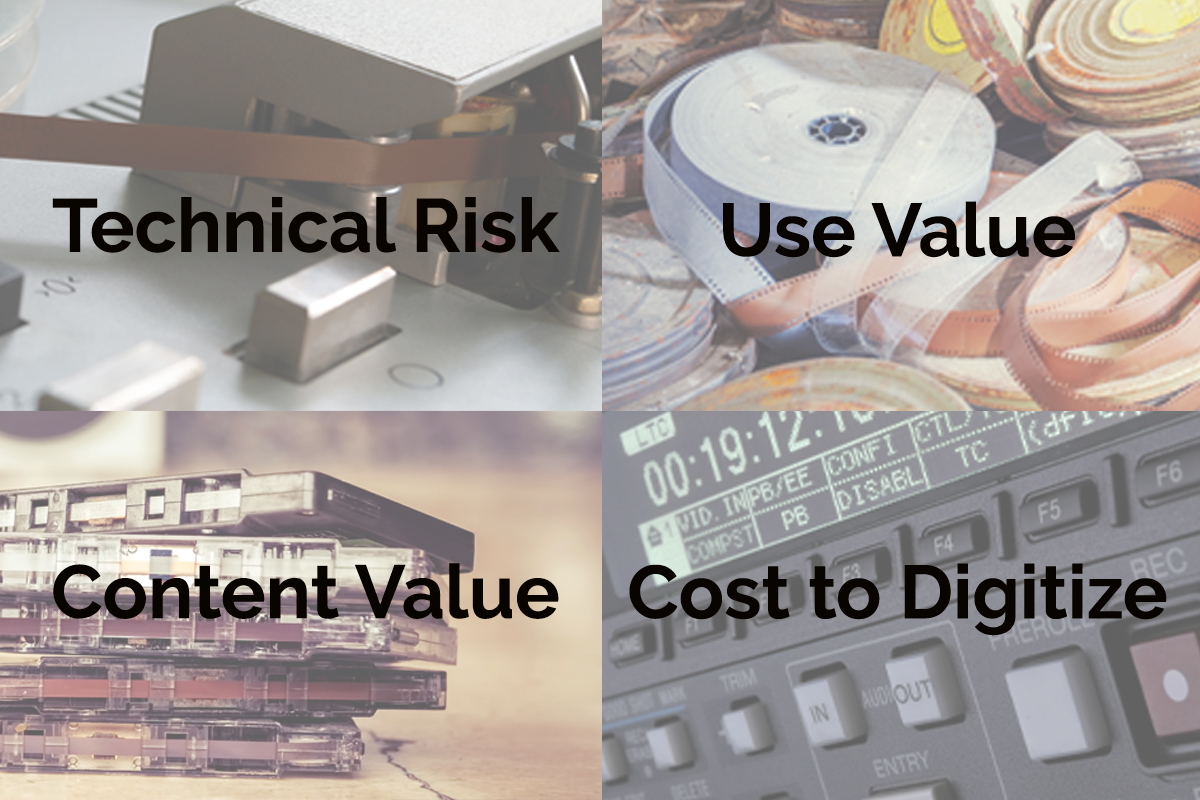
There is no one right answer to selection and prioritization. Each organization must make its own decision based on its own mission, goals, and capacity. So try approaching the rest of this post through the lens of your organization’s raison d’être.
There are four main points you will need to consider when evaluating an asset’s priority level:
- Technical risk
- Content value
- Use value
- Cost to digitize
Technical Risk
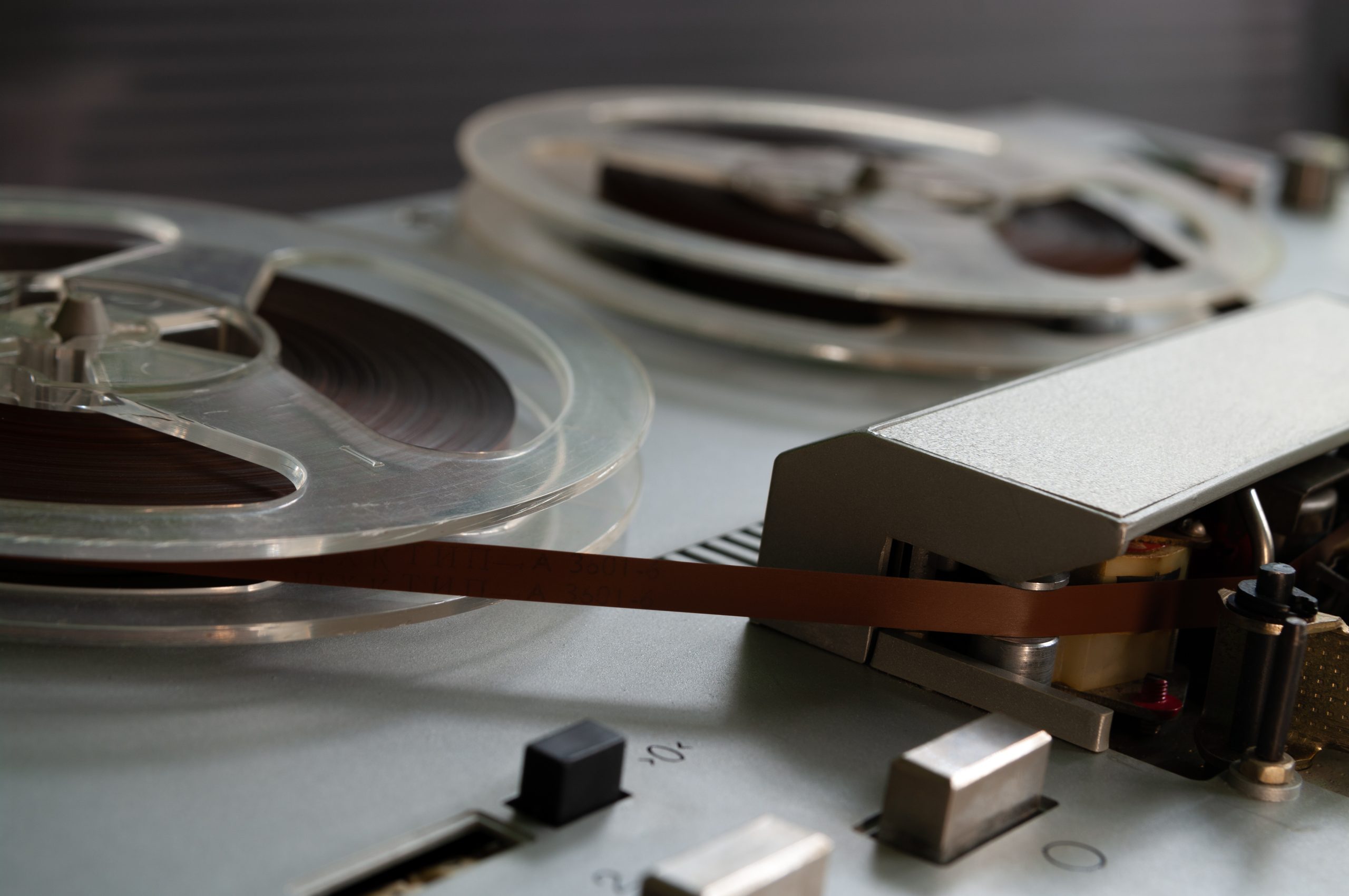
Technical risk takes into account the level of risk inherent in a particular format. This risk level is based on both a format’s obsolescence and how susceptible it is to degradation. It has absolutely nothing to do with what content is stored on an asset — it’s only considering the physical media format itself.
This topic is a beast and I will be writing up another blog post dedicated to this. For now, just know that an asset’s level of obsolescence and degradation will affect (a) how long you will be able to digitize it, and (b) the cost to digitize it.
Content Value
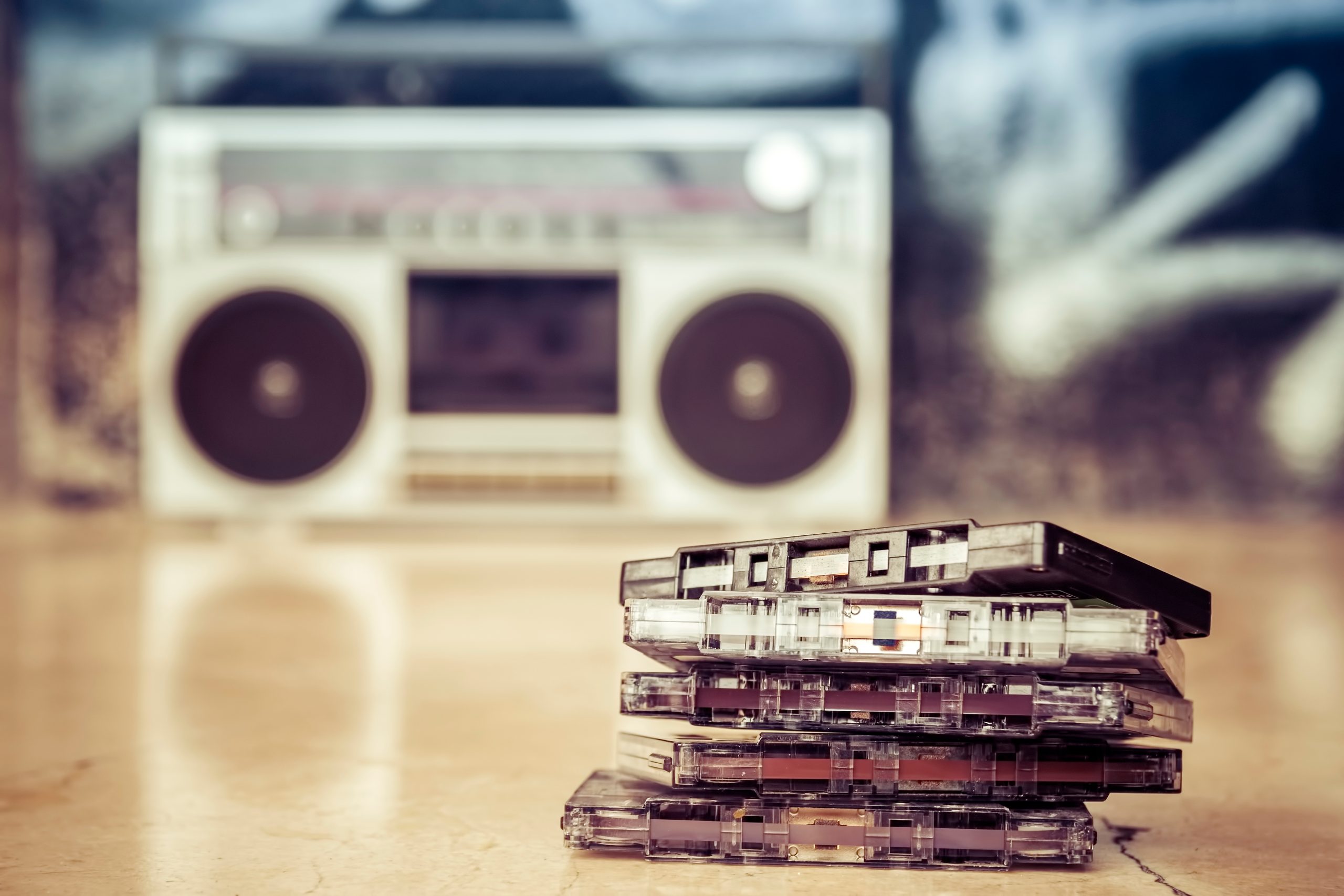
Assessing the content value of your assets will help you prioritize based on the historical or research importance of the content. How important is it that the content contained on this [insert AV media format here] lives on and remains accessible to your users? To the wider world?
We know that funding will always be a concern for most organizations and, for better or for worse, content-based advocacy and fundraising often catches an administrator’s or donor’s attention more than preservation issues.
A quick way to at least begin to winnow down your content priorities is to ask yourself two questions:
- Is this commercial/published or unique/rare content?
If the asset is commercial or published, chances are there are many more copies out there. Unless it is vital to your organization’s mission, this asset probably should not be a priority for you. Additionally, rights issues can be an issue here. Often simply purchasing published material on a new media format (e.g., digital audio file) will be less expensive than digitization.
If the asset is unique or rare, it should still be considered for digitization.
- Is this duplicate content of other items in the collection?
Perhaps someone made audio cassette “listening copies” of your ¼ inch open reel audio tapes in the 1990s. Or you accessioned a collection already containing multiple copies of the same content. There is no reason to digitize the content multiple times. Find the best copy2 and prioritize that one for digitization.
Use Value
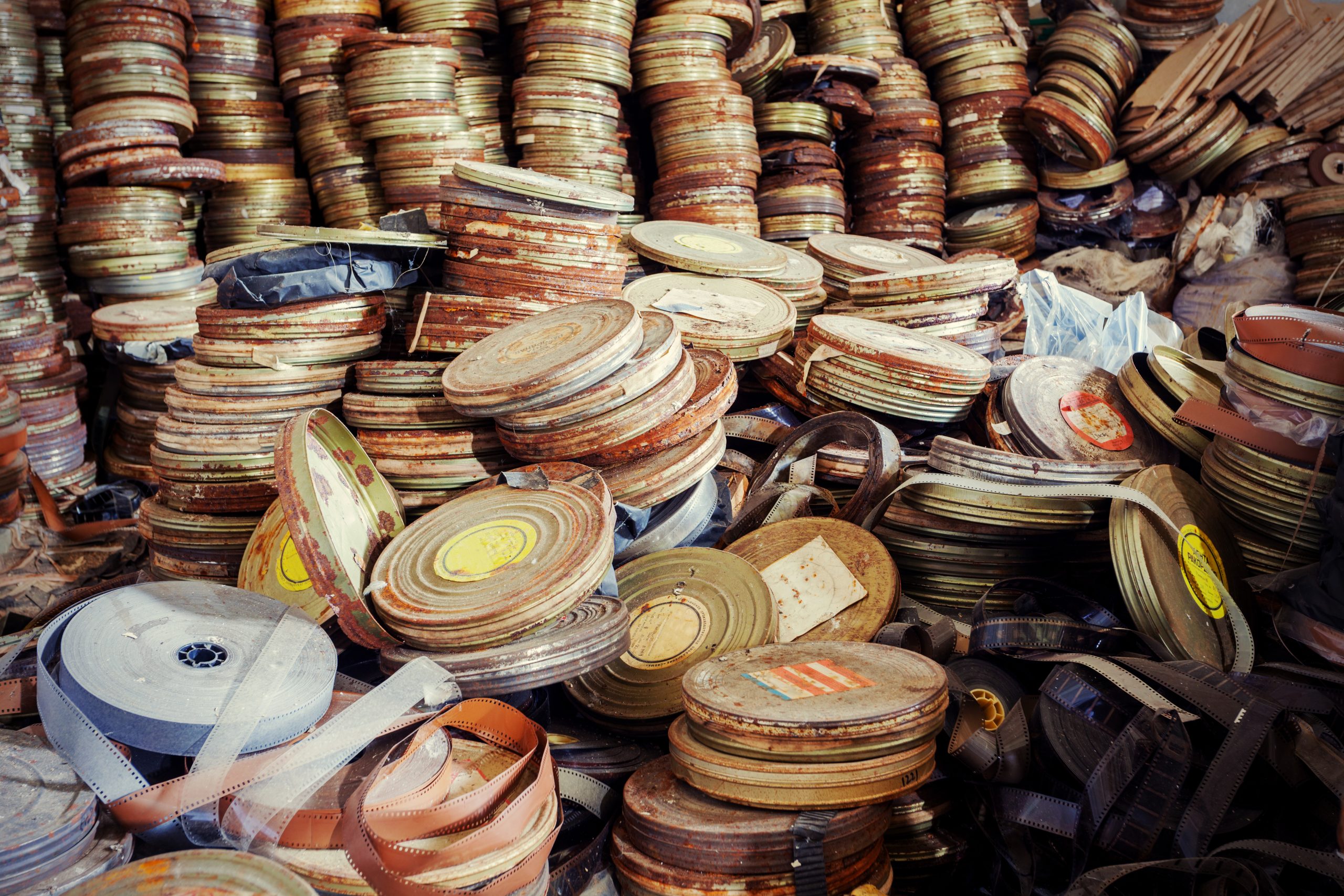
How useable is this content to your users? Yes, it’s a fine line between content value and use value, but I do believe there is a difference. Use value is driven primarily by research requests, as well as in support of various organizational activities such as events, education, marketing campaigns, web content, and more. Assigning an asset’s use value requires careful consideration of your organization’s mission, goals, and user needs. For each asset, ask yourself:
- Does this content contribute to my organization’s mission?
- Does it fit within my collecting policy?
- How does this serve my core audience?
- What are my organization’s rights in regards to this content?
- Do we actually have the capacity to care for this content? Are we the most appropriate place to care for it?
If you are interested in a more quantifiable approach to evaluating content and use value, I highly recommend looking at Indiana University’s MediaRIVERS. Even if you do not wish to use the associated software application, their documentation outlines their approach to scoring and ranking assets’ value (RIVERS stands for “[Media] Research and Instructional Value Evaluation and Ranking System). You can read more about it in their user guide, starting on page 45.
I’ve included a subset of their criteria here. I highly encourage you to read through all of their scoring categories and full explanations in the MediaRIVERS User Guide, but I find some of their points are difficult for many institutions to answer quickly and easily. For example, they ask you to rate an asset’s technical quality (i.e., how well recorded the asset is), which may be impossible to answer if you do not have playback equipment for the asset or even know what’s on the media. For that reason, I typically recommend folks focus on the following scoring categories:
| Category | Key Question(s) | Comments | Action |
| Subject Interest | How much actual or potential interest is there in the topics/subjects documented by the collection? | Includes consideration of significance, importance of a creative work, experiential potential, past use and potential for future use, and local and functional value. | Assign points on a 0-5 scale |
| Content Quality | How well, how thoroughly, or how substantially does the collection document its topics or subjects? | Encompasses the quality of the collection’s documentation of its topics or subjects. Includes consideration of extensiveness, detail, and thoroughness. | Assign points on a 0-5 scale |
| Rareness | To what extent is the collection’s documentation of its topics/subjects rare or unique? To what extent are there other sources of information that could substitute for it? | May require curatorial knowledge and/or research to identify similar collections at other institutions. | Assign points on a 0-5 scale |
Table 1: Excerpt from MediaRIVERS’ point-based system.
Cost to Digitize
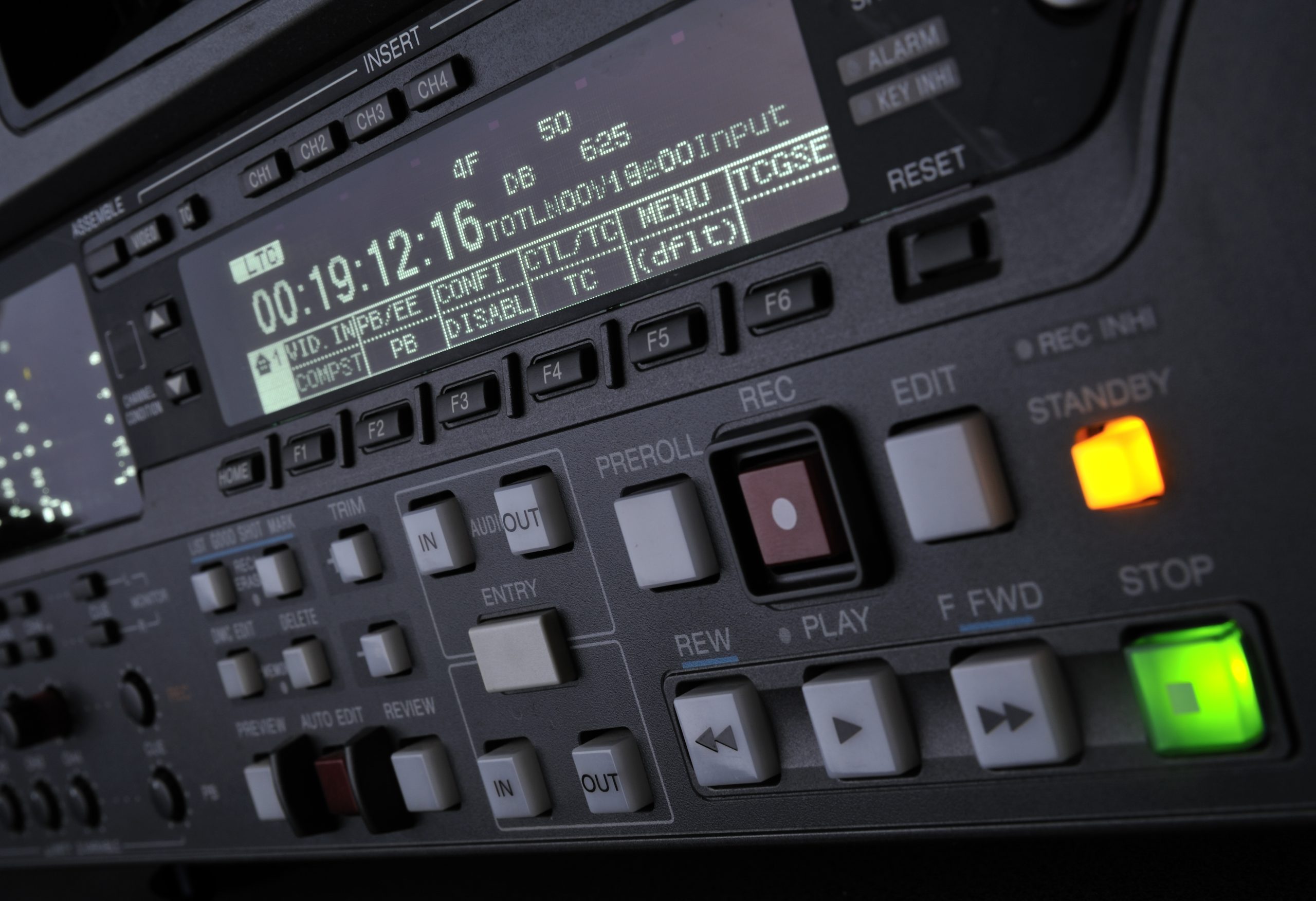
Last, but certainly not least, we come to what for many is the biggest hurdle. Based on technical needs and issues, different formats will cost different amounts to digitize. For example, due to its extreme obsolescence, it may cost ten times more to digitize a 2-inch quad videotape than an audio cassette.
You will have to take into account all of the factors described above — technical risk, content value, use value, and cost — to decide if it makes more sense to digitize one 2-inch quad or ten audio cassettes. Many digitization vendors will give you a price range by format type if you ask for a quote. I want to emphasize that there is no right or wrong answer here, as long as you think through all the factors and decide what is best for your organization. Now go forth and digitize!
1 When talking about AV (and only AV), I tend to use the words “preservation” and “digitization” interchangeably. For legacy, physical AV assets, digitization IS preservation. Incidentally, for AV assets digitization also leads to what is often the only form of access readily available, which can often be an easier sell to administration.
2 Ah, the old “best copy” question. Usually, this will be the original asset. Sometimes the original asset is compromised (e.g., moldy or deteriorated). Sometimes you have no idea which asset is the original asset. Sometimes you only have the funds to digitize the audio cassette copies, not the ¼ inch originals. Just do your best. No one will shame you for doing whatever you can to preserve your collections.